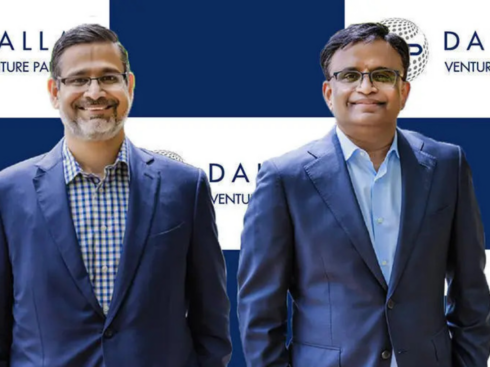
SUMMARY
Tip: You Must Have Multiple Versions Of Your Pitch Deck
One of the hardest things to know when you’re new to fundraising is what you’re supposed to send to an investor, when and will they keep your information confidential. As a VC and former entrepreneur let me offer you some advice.
(This is part of a series on how to improve your fundraising game. The first post & the full outline if you click the link.)
The short answer is that you should have multiple versions of your “pitch deck” (a short, visual presentation in Keynote, PPT or similar and shared as a PDF) and each occasion has a specific goal.
Before The Meeting
There is a lot of controversy/angst over whether to send a deck in advance or not. Those who don’t favor sending it would cite two issues:
- You lose the ability to control the narrative / inspire verbally because an investor has already read your deck and made decisions without you having the chance to deliver an impassioned plea; and
- Your confidential information will get leaked because the VC has your deck and hasn’t shown any commitments to you.
While I understand both arguments, I still believe passionately in sending materials in advance.
The key is WHAT you send.
Remember that the goal of an email to a VC or an introduction from a trusted mutual connection is simply to get you the meeting.
The mistake entrepreneurs make is either writing a lengthy email (everybody has too much email so it will get skimmed / not digested) or not having a deck which means the VC can’t quickly determine his or her fit as a potential investor.
So what you need to send is called a “teaser deck,” which you should always have prepared whether you’re fund-raising or not. It should give the reader a way to super quickly and visually scan your materials and understand:
- who you are
- what you do
- why the who & what are truly unique
- why the market opportunity will be really big
- what unique, defensible IP have you built / will you build that if you’re right about the market allows you to be a leader in the category
It should be visual. Compelling. Visually stunning (in this day and age this is becoming a sine qua non). You can make it 8–12 pages and the Title Page can say “YourCo Teaser Deck” or “YourCo Company Backgrounder”) so that it’s clear this isn’t your full pitch deck if you want.
You want to send just enough to get the meeting (and of course a great deck sells better than a long email) and not so long that you don’t leave a chance to wow the person in your actual meeting.
But what about the privacy/confidentiality concern? Poppycock. A great teaser deck should be the kind of thing that you are totally happy if it gets leaked because more people will see just how amazing you are. It’s a marketing deck and nothing in it should reveal some “secret sauce” that your competitors could magically copy and destroy you. Almost every idea worthy of funding has 5 amazing teams trying to do the same thing and execution and team determines the winners.
I wrote more about “why you should send the damn deck” in a previous post and you should 100% send a deck and not send a link (read my post for why).
Finally, I know you looooove your high-quality images that cause your file to be 82MB but the reality is that if your goal is to have your deck be read this is ridiculous. You can create the perfect fidelity images for when you’re in person but use your presentation tool to create a smaller-sized version you can send around. I recommend sub 10MB.
During The Meeting
One last pitch for why you should send the teaser deck in advance. If a VC has read your deck and gets the basic premise they will turn up to your meeting a lot more prepared to discuss & debate the merits of your deal versus trying to think about it on the fly. You’ll get more value out of the meeting that way — whether they invest or not.
If your teaser deck was 8–12 pages it would likely include:
- team
- market problem
- why your solution solves this problem
- progress to date (funding, team, customers, revenue if significant)
- TAM (market sizing / why this will be valuable)
Your “meeting deck” should just be an expansion of what was in your teaser deck. It would have a more complete description of the market problem, it would likely show the unit economics of your solution, it would be a deeper dive into your solution and it would have more information about your progress to date. In addition it would have:
- Your future vision / where the company is heading
- Your financial plans (6 quarters P&L, 3–5 year annual P&L)
- How much you’re raising, use of proceeds, how long cash lasts & what milestones would be achieved
The main difference between your teaser deck and meeting deck is the depth of detail and the willingness to share more confidential, forward-leaning information. I would literally start the meeting with “I know you’ve seen our teaser deck but I’ve got a longer version where I’m going to share more insights with you here.” That way you establish at the outset that “you haven’t seen it all — it’s worth paying attention.”
Your meeting deck should still be relatively short (15–25 pages) so that you can get through it all within a 45-minute time period. You want to develop a “narrative” that holds the readers’ attention and helps shape the company into context.
If you have another 15–20 super detailed slides they should either be in an appendix after you get through the main presentation or in a separate deck that you may or may not get out. These additional slides are often called “pocket slides” as in you have them in your pocket in case you need to pull them out.
It’s best not to present them because they interrupt your narrative but if you meet somebody super detailed who wants to dig in a mile deep then pulling them out makes you a hero because you look totally prepared and like you’ve thought of everything. Pocket slides work best when they prove a point you were asked and look like they’re just part of how you analyze your business outside of fund-raising meetings.
And PLEASE remember this critical advice for your meeting deck …
The goal if a meeting deck is to aid your conversation not to show how great you are at making slides. If the investor spends all of his or her time staring at slides you’ve lost. The goal of a fund-raising meeting is to build rapport and you can only do this looking in somebody else eyeballs and having a two-way conversation.
A very big mistake I see entrepreneurs making all the time is when they get in “pitch mode” where they rip through slide after slide with no breaks and no chance for discussion and the end they feel proud for how great they performed. The VC will smile, thank you, and later pass. A great meeting is a debate, not a pitch. This is the most important reason for why you need a short meeting deck and separate pocket slides with details.
Following The Meeting
If you sent a teaser deck in advance and presented a meeting deck in person then the obvious post-meeting follow up is to send a thank you email with the meeting deck and recommending possible “next steps.”
If it was the first meeting and you felt you got engagement you might ask for a second meeting which could be just with that person or perhaps to meet one of his or her colleagues. If you presented on your own but have a very talented CTO perhaps your follow up is to bring by your CTO to show why the tech you’ve built is truly unique.
Another great strategy is to ask to meet with some of their portfolio companies if you think your tech would be relevant to them as potential customers. That way your VC meeting becomes a sales lead AND the VC can get input from a trusted source (a portfolio company) without having to immediately commit more time.
Importantly, if you didn’t show all of your pocket slides then this could be a good source of materials for a next meeting where you can show more details you didn’t get to cover. Don’t send these — go back and present them. It’s always best to have a shorter meeting where you leave the VC wanting to learn more.
And as you become a later stage company in fund raising you’ll likely have several follow up decks to discuss things like:
- Unit economics
- LTV / CAC analyses
- Cohort analyses
- Retention rates (SaaS) or repurchase rates (eCommerce)
- etc.
These separate decks are part of your fund-raising process and not something you provide in bulk to a VC asking to see your data room. These are artifacts of a sales process designed to get you back in front of the VC and have further engagement. If you read the full series I go into a lot more details on how to run this playbook.
[This article by Mark Suster appeared first on bothsidesofthetable and has been reproduced with permission.]


























